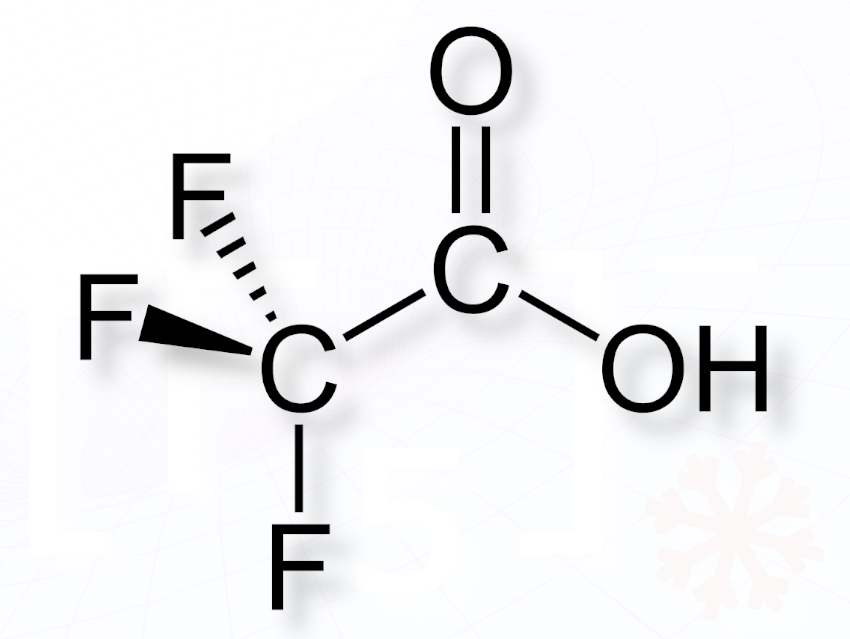The synthetic organofluorine compound trifluoroacetic acid (TFA) is increasingly found in global rainwater, soils, food, and human fluids, raising environmental and toxicological concerns. TFA is a colorless, odorless liquid that is miscible with water and most organic solvents. The strong acid is a stable, short-chain perfluoroalkyl acid (PFAA) and is considered a per- and polyfluoroalkyl substance (PFAS).
TFA originates from major industrial sources and was also identified in 2016 and 2017 as a degradation product of various pesticide active substances. The German Umweltbundesamt has identified pesticides as the main source of TFA in water in agricultural areas. Additionally, certain fluorinated greenhouse gases, such as the refrigerant R1234yf, are known to degrade almost completely to TFA in the atmosphere. TFA also serves as a precursor to various fluorinated compounds and is widely used in organic synthesis due to its volatility, solubility, and strong acidity. Its applications include deprotection of protecting groups such as Boc, ion pairing in liquid chromatography (HPLC), solvent in NMR, and calibrant in mass spectrometry.
TFA is considered less bioaccumulative than other PFAS. Significant uncertainties persist regarding its environmental effects. Its ecological risk remains under debate due to its persistence, high mobility, global ubiquity, rising concentrations, and status as the most prevalent PFAS in the environment, leading to continuous low-level exposure. Its potential chronic effects through environmental accumulation remain under investigation.
In July 2024, German authorities (German Environment Agency (UBA) and the German Federal Institute for Risk Assessment (BfR)) submitted a proposal to the European Chemicals Agency (ECHA) to link TFA and its salts to reproductive toxicity and as suspected of damaging fertility, based on studies showing damage to animal fetuses. ECHA opened a public consultation on this reclassification request and is expected to make recommendations to the European Commission regarding labeling and control measures. A scientific opinion and potential legal update are expected by 2026–2027.
‘The toxicological effects were only detected in animal models at TFA concentrations significantly higher than those found in the environment. Currently, there are no expected adverse health effects from consuming water or food contaminated with TFA,’ says BfR President Andreas Hensel. ‘The new classification is an important step in preparing further measures to ensure that this remains the case in the future.’




